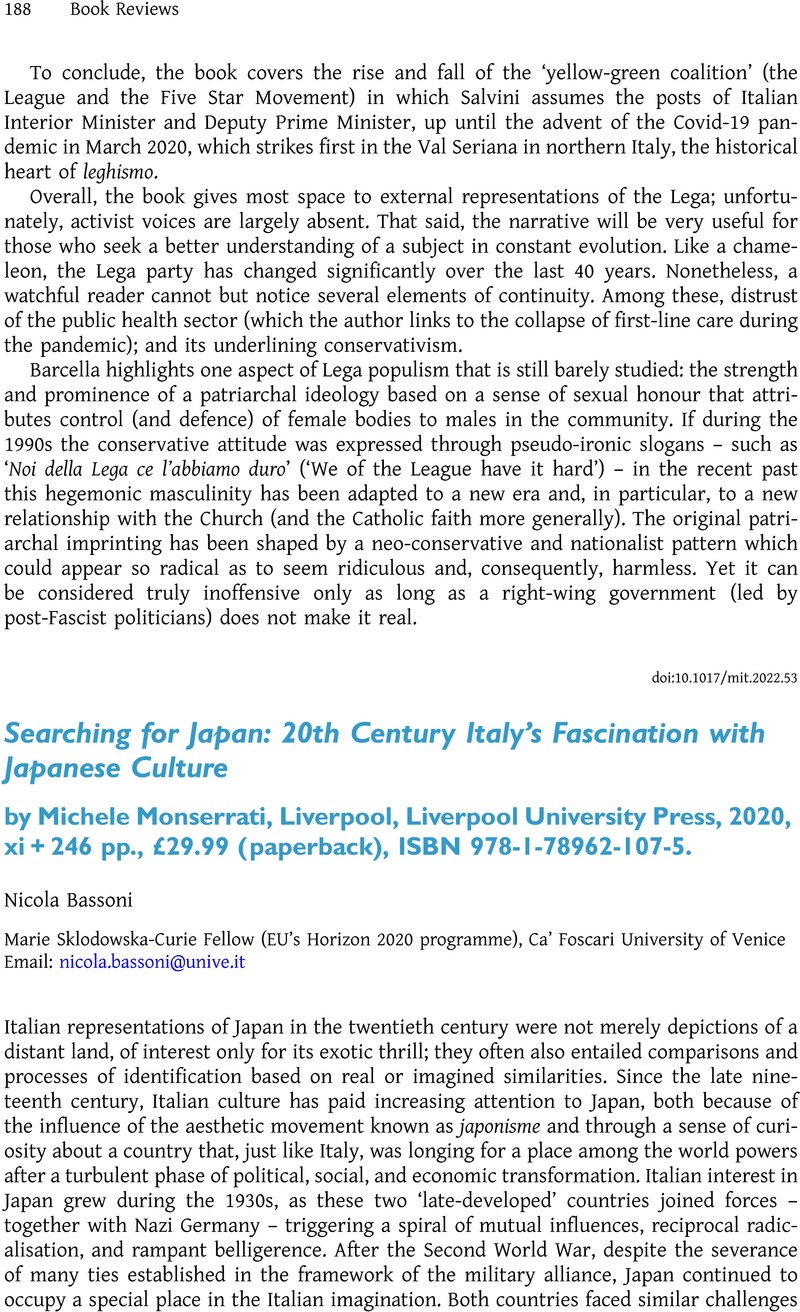Crossref Citations
This article has been cited by the following publications. This list is generated based on data provided by Crossref.
Bassoni, Nicola
2023.
Searching for Japan: 20th Century Italy's Fascination with Japanese Culture by Michele Monserrati, Liverpool, Liverpool University Press, 2020, xi + 246 pp., £29.99 (paperback), ISBN 978-1-78962-107-5 – ADDENDUM.
Modern Italy,
Vol. 28,
Issue. 2,
p.
193.



